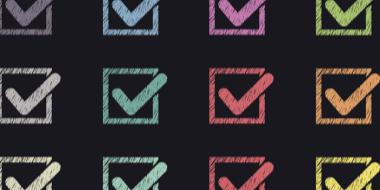How To Write a Targeted Resume: Tips and Examples
By targeting your resume to each job that you apply for, you can make it abundantly clear that you are qualified for the position by highlighting exactly the skills and experience that the hiring manager is looking for.

This article will cover what a targeted resume is, whether or not you should tailor your resume for each job application, and how to do so quickly and effectively.
What is a Targeted Resume?
A targeted resume is one that is customized to each job listing by essentially providing what the posting is asking for in terms of your experience, skills, education, and other qualifications. Tailoring your resume to each job posting makes it more relevant and helps you stand out from a sea of applicants, therefore increasing your chances of scoring an interview.
Should You Tailor Your Resume For Each Job Application?
Although it’s a bit of extra work, targeting your resume to each job that you apply for can be extremely beneficial in the vast majority of cases.
The only time you may not need to target your resume is if you are new to the professional world, don’t have a lot to put on your resume to begin with, and are applying to an entry level job with only basic requirements. However, even then it’s a good idea to read through your resume with your target job in mind and ensure that your qualifications are listed in a way that optimizes them for the position.
In fact, more than half of all recruiters say that not tailoring your resume is essentially a recipe for rejection. Hiring managers may even assume that non-targeted resumes are spam and flip past them immediately.
Spending the time to target your resume for each job shows potential employers that you are taking the job application process seriously and that you are uniquely qualified for the position.
Personalizing your cover letter for each job application is standard practice, and targeting your resume should be as well.
How To Create a Targeted Resume (With Examples)
You may be thinking that tailoring your resume to each and every job description that you apply for will take way too much time.
However, that is actually not the case. Here’s how to create a targeted resume efficiently and effectively:
Build a Generic Resume First
Start by creating a very thorough, generic resume that isn’t targeted to any specific job. Choose a professional resume layout and enter your name and contact information (including your LinkedIn URL), a resume headline, and a resume summary. Fill in your work experience section, education section, and optional sections like hobbies and interests, volunteer work, etc. Include all the details, skills, and achievements you can think of for each item - add everything that you have accomplished in your education, career, and personal life (if work appropriate, of course).
This might mean that your generic resume is well over the recommended length of one page (two pages if you have 15+ years of experience in your field), but it can be very helpful to have everything in one place.
Expert Tip
Save your basic resume with a file name like ‘Generic Resume’ and duplicate it each time you want to apply for a job. That way you can easily target the new copy to your intended job while leaving your template intact for next time.
Pare Down Your Resume to Only Relevant Details
Then simply remove items from your generic resume that are not directly relevant in order to create a focused, targeted resume. You may also want to tweak some of your bullet points or reorder things to place your most relevant details first within their categories.
Read the Job Listing Carefully to Identify Keywords
When you find a job that you want to apply for, read the listing carefully and make a note of the specific skills and experience that the employer is looking for. Use any or all of the keywords that apply to you in your resume.
This will not only show the employer that you read the job listing thoroughly and took the time to target your resume, but it can also help your resume pass an applicant tracking system (ATS) scan. Many employers use ATS software to perform an initial scan of every resume that is submitted and weed out the ones that aren’t relevant. Targeted resumes that contain keywords from the job posting are much more likely to pass that initial scan and land in the hands of a hiring manager.
Example of identifying keywords in a job ad:
XYZ Company is seeking a full-time manager of the customer service representative team with the following qualifications:
- At least 3 years experience in customer service
- High school diploma (college degree preferred)
- Must have excellent people skills, verbal communication skills, and active listening skills
- Management experience is a plus
- Experience answering a high volume of customer calls
- Creates positive experiences for all customers and team members
- Use conflict resolution and de-escalation techniques to resolve problems
- Bilingual Spanish/English desired but not required
You can then incorporate the highlighted words and phrases into your resume to show the hiring manager that you are the best fit for the job.
Tailor Your Resume Headline and Summary
Work some of the keywords into your resume headline as appropriate. Use your resume summary to support your headline, and be sure to mention the company that you are applying to by name.
Use the same job title language as the job ad to make it abundantly clear that you are qualified. For example, if the job listing says ‘customer service representative’ but your past job title was ‘client success agent,’ it’s acceptable to rephrase the title to match the employer’s language so long as it doesn’t create any false impressions about your experience.
Include a few of the skills that the employer is really looking for, and back up your skills by sharing a couple of your biggest related accomplishments. If the employer asks for a specific number of years of experience, be sure to mention a number in your resume summary.
Example of a targeted resume headline and summary:
Bilingual Customer Service Representative with 3 Years Experience
Energetic and friendly customer service representative seeking management position with XYZ Company. Excellent active listening and verbal communication skills in both English and Spanish and experience managing trainees. Earned a B.A. in Business Administration and completed training in conflict resolution, de-escalation, and empathy. Increased customer satisfaction rating by 15% in 1 year and scored 95%+ on all surveys and evaluations.
As you can see, this resume headline and summary address the company by name, include several skills and qualifications listed in the job ad, and highlight past performance and achievements.
Target Your Work Experience
Although of course you should never exaggerate or lie about your work experience, you can still target this section to each job. Think about specific accomplishments at each of your past positions that highlight skills that the potential employer is looking for, and back them up with quantified data in the bullet points. And, again, use the same language that the job ad uses to make it clear if you have held a similar or relevant position before.
Example of targeted work experience:
Customer Service Representative, ABC Corporation, Los Angeles, CA, 2020-present
- Provided bilingual phone support to create positive experiences for all customers
- Increased customer satisfaction rating by 15% in one year
- Consistently scored 95%+ on all customer service satisfaction surveys
- Earned a conflict resolution certification
- Supervised and managed 2 trainees
Junior Customer Service Representative, LMN Processing, Santa Cruz, CA, 2018-2020
- Provided Spanish-English translation whenever necessary
- Handled an increase in daily call volume from 50-150 over first 3 months
- Consistently scored 95%+ on all surveys and evaluations
- Earned certifications in active listening, empathy, and de-escalation
Target Your Education Section
Yes, you can even tailor your education section to each job application. Since the example job posting mentioned that a high school diploma is required and a college degree is preferred, just including college education details on your resume is a great start.
However, you can go even further by including relevant coursework (if you are relatively new to the professional world), internships that you may have completed, and other skills that you gained or honed in school.
Example of targeted education section:
BA in Business Administration, University of Southern California, 2014-2018
- Completed a customer service internship with RST Corporation
- Minored in Spanish
- Completed a senior project about techniques for improving customer satisfaction
Target Your Resume Skills
In the traditional reverse-chronological resume format, your skills will be highlighted in your work experience under each past job entry as covered above. However, if you opt to use a skill-based resume format, you’ll want to ensure that it is targeted to the job posting.
Cross-reference the job listing and your master list to select 4-6 skills that the employer really wants and that you possess. Then add a couple of your unique skills or attributes that are not on the job posting to avoid pandering, make it clear that you didn’t copy and paste from the job description, and make your resume stand out from other applicants.
Example of targeted skill section:
Hard Skills: Bilingual (Spanish/English), call center systems and operations, management, high-volume customer calls, computer and phone skills
Soft Skills: Empathy, active listening, verbal communication, de-escalation, conflict resolution, problem solving, interpersonal skills, time management
Tailor Your Activities, Volunteer Work, Etc.
And finally, if you decide to include optional resume sections like activities, volunteer experience, hobbies and interests, and so forth, be sure to tailor these sections as well. Think of everything you want to include in terms of how it proves that you have the necessary skills and qualifications to do the job well.
Key Takeaways
Targeting your resume to each job that you apply for doesn’t have to be a time-consuming process, and it can greatly improve your chances of being invited in for an interview. Identify keywords by reading the job posting carefully, and then include those keywords throughout all sections of your resume.
Need help creating the perfect targeted resume? Jobseeker offers a professional resume creation tool - simply enter your information and then easily click between different formats, color schemes, and fonts to create a polished, professional resume. You can then download it instantly and get started applying for jobs!



